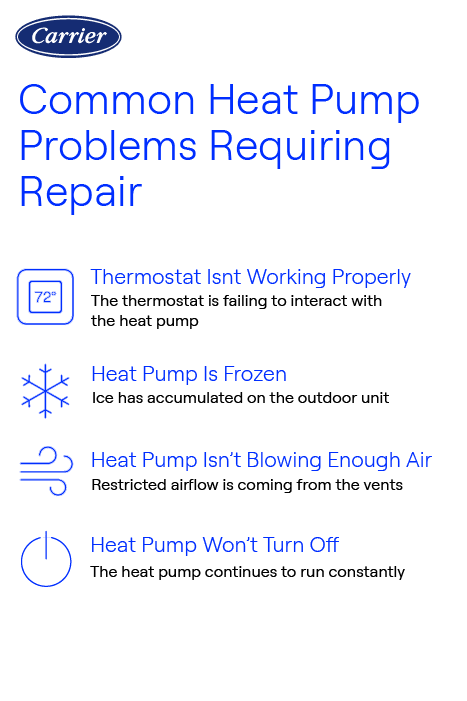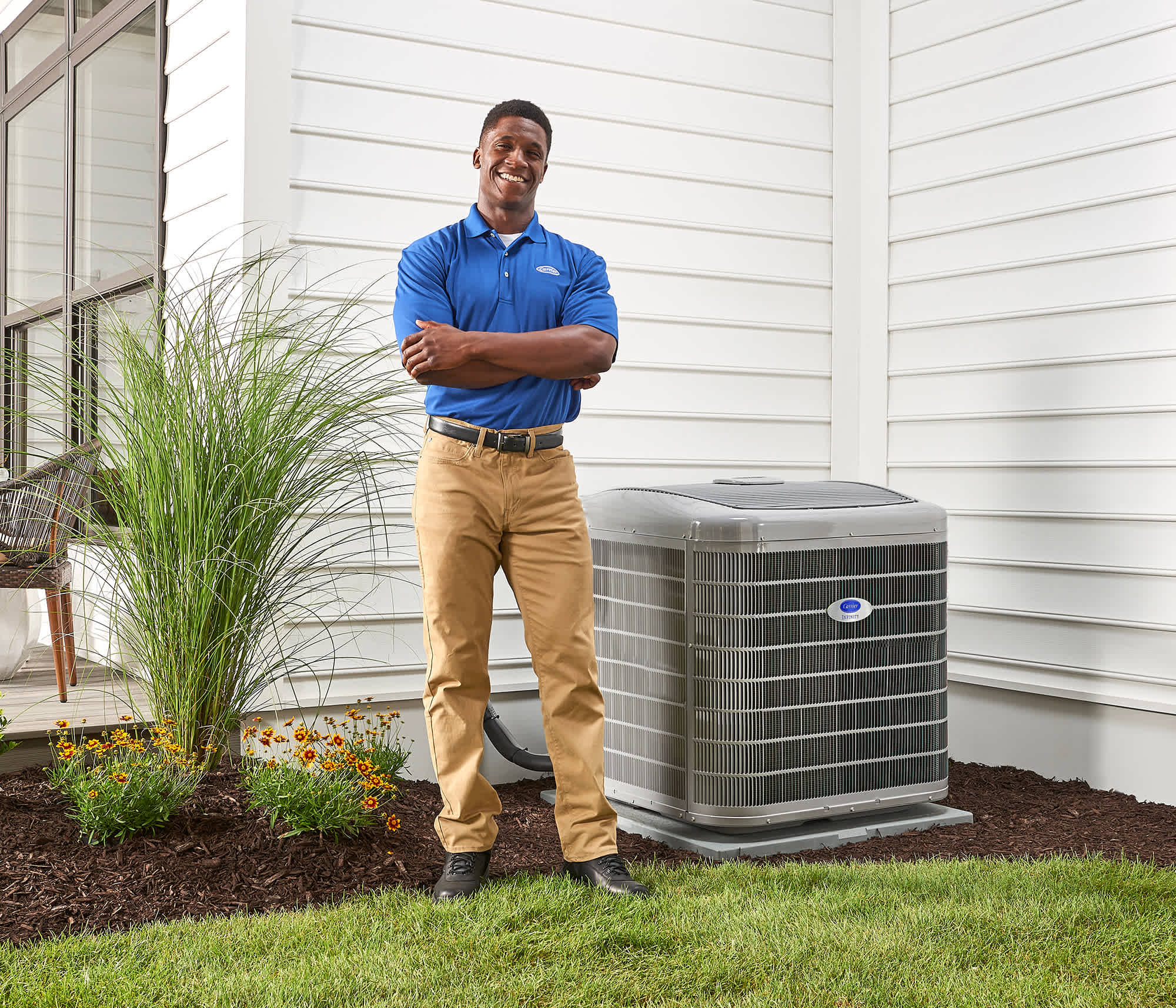Heat Pump Repair
By Travis Baugh
Heat pump repair can seem complex, but understanding common issues and how to address them can help restore comfort to your home quickly. In this article, we’ll guide you through heat pump repair troubleshooting, explore the heat pump repair process from start to finish, how to select a heat pump repair company. If you are in need of immediate heat pump near you, reach out to your local Carrier dealer.
Common Problems with Residential Heat Pumps & How to Repair Them

Thermostat Isn't Working Properly
Heat Pump is Frozen
Heat Pump Isn't Blowing Enough Air
Heat Pump Won't Turn Off
Heat Pump is Blowing Cold Air in Heat Mode
Curtis Herchenbach, owner of Herchenbach Mechanical in Gurnee, IL, outlines common reasons homeowner schedule heat pump repair.
“Homeowners most often need heat pump repairs for three reasons,” Herchenbach said. “Skipping annual maintenance is the biggest, followed by improper installation and incorrect control setup.”
Six Factors In Selecting A Heat Pump Repair Company
1. Look for NATE-Certified Technicians
2. Find Experienced Experts
3. Check Online Reviews
4. Look for Transparent Pricing
5. Review Warranty and Guarantees
6. Prioritize Good Customer Service
Connect With A Carrier Dealer For Heat Pump Repair
For professional heat pump repair near you, you can trust your local Carrier dealer to restore the comfort and efficiency of your heat pump system. Many Carrier dealers are Factory Authorized Dealers, which means they have undergone rigorous training directly from Carrier. This ensures that they are highly knowledgeable about Carrier products and best practices for heat pump installation, repair, and maintenance.
Your local Carrier dealer understands that a malfunctioning heat pump can disrupt your daily life and increase your heating and cooling bills. Our dealers are committed to providing prompt and reliable repairs, ensuring your heat pump operates smoothly once again.
If a new heat pump is needed, Carrier offers a robust lineup of heat pumps with energy savings, comfort features, and humidity control for your home. Check for rebates and heat pump tax credits in your area as well.

Step-By-Step Process for Heat Pump Repairs
Step 1: Initial Heat Pump Assessment
Your HVAC contractor will first ask you to describe the issue and any symptoms you've noticed with your heat pump. The technician will perform a visual inspection of the heat pump, checking for obvious signs of damage, wear, or malfunction.
Step 2: Heat Pump Diagnostic Testing
HVAC contractor will then perform a series of diagnostic tests on your heat pump to check for the specific issues leading to the need for a heat pump repair.
- Electrical Tests: The technician will check the electrical components, including the thermostat, wiring, capacitors, and contactors, to ensure they are functioning correctly.
- Refrigerant Levels: The refrigerant line will be checked to ensure the levels are within the proper range. Low refrigerant can indicate a leak that needs to be repaired.
- Airflow Check: The technician will inspect the airflow, including the condition of the air filters, blower motor, and ductwork, to ensure there are no obstructions or issues.
- Operational Tests: The heat pump will be run through its heating and cooling cycles to observe any performance issues and listen for unusual noises.
-
![infographic showing parts of heat pump that may need heat pump repair infographic showing parts of heat pump that may need heat pump repair]()
Step 3: Identifying The Heat Pump Problem
Your HVAC contractor will test individual components like the compressor, reversing valve, and sensors, analyzing the results to pinpoint the root cause of the problem.
Step 4: Heat Pump Repair Solutions
If any components like capacitors, fan motors, thermostats, or the reversing valve are faulty, they will be replaced, while refrigerant leaks will be repaired and recharged, and the technician will clean coils, filters, and perform routine maintenance to ensure optimal system performance
Step 5: Heat Pump System Testing
After the heat pump repairs are completed, the technician will test the system to ensure it is operating correctly and efficiently. Safety features and controls will be checked to ensure they are functioning properly.
Step 6: Final Steps and Follow-Up
The technician will explain the repairs made, provide maintenance instructions, document all work and parts used, and may schedule a follow-up visit to ensure the system is functioning properly.

Frequently Asked Questions About Heat Pump Repair
Learn More About Heat Pumps
- Let's start with the basics - what is a heat pump?
- Get information about the cost of a heat pump
- Learn about emergency HVAC repair
- Learn about heat pump service
- 3 reasons to consider a heat pump
- Heat Pumps: A Sustainable Comfort Solution


